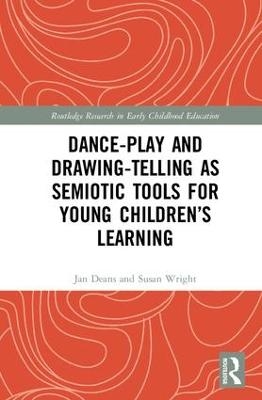
Dance-Play and Drawing-Telling as Semiotic Tools for Young Children’s Learning
Routledge (Verlag)
978-1-138-67645-9 (ISBN)
Investigating children’s learning through dance and drawing-telling, Dance-Play and Drawing-Telling as Semiotic Tools for Young Children’s Learning provides a unique insight into how these activities can help children to critically reflect on their own learning. Promoting the concept of dance and drawing-telling as highly effective semiotic tools for meaning-making, the book enlivens thinking about the extraordinary capacities of young children, and argues for the incorporation of dance and drawing in mainstream early childhood curriculum.
Throughout the book, numerous practice examples show how children use movement, sound, images, props and language to imaginatively re-conceptualize their everyday experiences into bodily-kinesthetic and spatial-temporal concepts. These examples illustrate children’s competence when given the opportunity to learn through dance and drawing-telling, as well as the important role that teachers play in scaffolding children’s learning.
Based on award-winning research, this insightful and informative book makes a sought after contribution to the field of dance education and seeks to reaffirm dance as a powerful learning modality that supports young children’s expressive non-verbal communication. Encouraging the reader to consider the significance of multi-modal teaching and learning, it is essential reading for researchers in the dance, drawing and education spheres; postgraduate students taking courses in early childhood; play and dance therapists; and all early childhood teachers who have a specific interest in arts education.
Jan Deans is the Director of the Early Learning Centre, which is the University of Melbourne’s research and demonstration preschool. She is a long time advocate for teaching and learning through the arts and has worked both locally and internationally in early childhood, primary, tertiary, and special education settings. She has broadly based expertise in relation to early childhood education and service delivery and her recent research interests include learning through dance, social emotional competence and learning in the natural environment. In 1997 she established Boorai –The Children's Art Gallery to present the voices of young children as expressed through their art and narratives. Boorai collaborates with educational and community organizations locally, nationally and internationally. Susan Wright is Chair of Arts Education in the Melbourne Graduate School of Education at the University of Melbourne and is the Director of the Melbourne UNESCO Observatory of Arts Education. Her areas of teaching and research centre on semiotics and how meaning is transmediated across modalities, with a particular focus on artistic forms. She has also focused on ontological frameworks for understanding arts education in relation to learning and pedagogy and the influence of the environment on children’s and adults’ co-construction of artistry. Professor Wright has published extensively in the area of early childhood arts education and her principal books include The Arts Young Children and Learning and an edited compilation entitled Children, Meaning-Making and the Arts.
1 Embodied Thinking: The Central Role of Dance 2 Dance and Drawing as Sign Systems for Transmediated Meaning-Making 3 Planning for Dance 4 The Dance Encounter 5 Learning about Children’s Dance from Children 6 Small Group Dance-Play 7: Ensemble Dance-Play 8 Drawing the Threads Together
| Erscheinungsdatum | 14.03.2018 |
|---|---|
| Reihe/Serie | Routledge Research in Early Childhood Education |
| Zusatzinfo | 3 Line drawings, black and white; 58 Halftones, black and white |
| Verlagsort | London |
| Sprache | englisch |
| Maße | 156 x 234 mm |
| Gewicht | 453 g |
| Themenwelt | Sachbuch/Ratgeber ► Sport ► Tanzen / Tanzsport |
| Schulbuch / Wörterbuch | |
| Sozialwissenschaften ► Pädagogik ► Allgemeines / Lexika | |
| Sozialwissenschaften ► Pädagogik ► Vorschulpädagogik | |
| ISBN-10 | 1-138-67645-4 / 1138676454 |
| ISBN-13 | 978-1-138-67645-9 / 9781138676459 |
| Zustand | Neuware |
| Haben Sie eine Frage zum Produkt? |
aus dem Bereich


